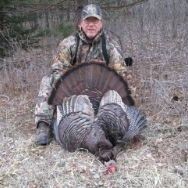Stunted Fish vs Overfished vs Special Regs
-
Your Responses - Share & Have Fun :)
-

-

-

-

By leech~~ · Posted
Well, that's not getting 10 years old now is it! 🥱🥱 -
.thumb.jpg.5c1a86e9339e49e53f5bfefed2220054.jpg)
By LakeofthewoodsMN · Posted
On the South Shore... Ice fishing remains strong across Big Traverse Bay, with resorts and outfitters still in full swing offering both day houses and sleeper fish houses. The bite in February has been excellent, with lots of fish being caught and plenty of opportunities for fresh fish fries. Some ice roads are now extending over 20 miles out, keeping anglers on productive schools of walleyes and saugers. Ice conditions continue to build, making this one of the best late-season ice years in recent memory. If you’re fishing on your own, bring an auger extension, as ice thickness is significant. Most fish houses are positioned over deep mud, while some remain on or near structure. As always, expect to sort through some smaller fish, but that’s a good sign of a healthy fishery. With fish houses allowed on the ice through March 31st and walleye and sauger seasons open through April 14th, the extended season on Lake of the Woods offers plenty of time to plan your trip. Pike fishing never closes, and with the thick ice conditions, this year is shaping up to be fantastic for targeting trophy pike. March: The Go-To Month for Trophy Pike March is prime time for big northern pike, as these aggressive predators begin staging for the upcoming spawn. Lake of the Woods is loaded with pike over 40 inches, and tip-up fishing can be lights out this time of year. Anglers targeting pike should set baits under tip-ups in shallow water (6-15 feet) near pre-spawn areas, weedy areas, river mouths, or back bays. Current Fishing Depths & Patterns: Most fish are being caught in 26-32 feet of water. Walleyes, saugers, jumbo perch, eelpout, pike, tullibees, and even some crappies are in the mix. Suspended walleyes are showing up—watch electronics closely. Plenty of limits are being caught, with many anglers taking home bonus perch this season. Best Techniques: Jigging Line: Jigging spoons with rattles tipped with a minnow head continue to be the top producer. Lipless crankbaits and jigging rap-style lures are also working well for aggressive fish. Lures with built-in lights have been very effective in the stained water (Reminder: In Minnesota, lighted lures are legal as long as the battery is mercury-free and the hook is attached directly to the lure, not on a dropper line). Deadstick: A plain hook or small jig with a live minnow, set 6 inches to a foot off the bottom, continues to catch neutral or less aggressive fish. Time of Day: Bite windows vary daily. Some days, mornings are best; other days, the afternoon bite turns on. Walleyes can move through at any time, so staying patient and watching electronics is key. On the Rainy River... Mornings and evenings continue to be the best times for targeting walleyes. A jig and minnow or jigging spoon tipped with a minnow head remains the go-to presentation. Sturgeon fishing has been solid, with some giants being iced (Reminder: The current sturgeon season is catch-and-release). Safety Note: Ice conditions on the Rainy River are good, but they can change rapidly due to current. Always check with resorts or outfitters before heading out. Up at the NW Angle... Ice fishing remains excellent throughout the islands region of Lake of the Woods. Resorts are moving fish houses regularly, keeping guests on active schools of walleyes. Anglers are catching a nice mix of walleyes, saugers, jumbo perch, pike, and tullibees. Big crappies continue to be caught just over the border in Canada. If you're interested in targeting crappies, check with a NW Angle resort for guide services and ice conditions. Plan Your Ice Fishing Adventure! Lake of the Woods offers an extended ice fishing season, with: Fish houses allowed overnight through March 31st Walleye & sauger season open through April 14th Pike season never closes—March is prime time for trophies! Perch and crappie seasons open year-round Whether you’re looking for a day house rental, a sleeper fish house, or comfortable lodging at a resort with or without a meal plan, there’s still time to plan your late-season ice fishing adventure. -

-

-

By leech~~ · Posted
Sounds like a nice last day. I like how you photoshop a different shirt on that same picture the last few years! 🤣 -
By JerkinLips · Posted
Beautiful day on Vermilion Sunday for the last day of walleye season. Lots of people were fishing in portables, or out in the open. Was entertaining watching many of the wheel and skid houses being pulled off of the lake. Checked half a dozen spots where wheel houses were removed and didn't find any trash at all. Sounds like people are getting the message. I may go out on the lake when the snow is melted to do a further check and cleanup if needed. Fishing was average for this time of the year. Had a decent bite from 2pm to 4pm when I caught my biggest eye (pictured 22 inch). Decent finish to a good season. Now on to lake trout fishing. Hope everyone had an enjoyable and successful ice fishing season. Going to be a long time before this year's open water season. -

By smurfy · Posted
Thanks Kettle! I'll bring mine with but won't be until mid march
-

Recommended Posts
Join the conversation
You can post now and register later. If you have an account, sign in now to post with your account.
Note: Your post will require moderator approval before it will be visible.